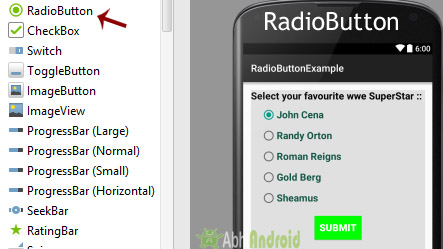
In order to use this behavior, we need to use the SwipeRefreshLayout widget as the parent of a ListView or GridView. In the above code we have given swipeRefreshLayout as parent layout, when. Step 2 Add the following code to res/layout/activitymain.xml. Step 1 Create a new project in Android Studio, go to File New Project and fill all required details to create a new project.

The vertical swipe is detected by the SwipeRefreshLayout widget and it displays a distinct progress bar and triggers the callback methods in the app. This example demonstrate about how to implement android pull to refresh. How does swipe to refresh work in Android?

The method which actually refreshes the data calls setRefreshing (false) to signal that the update is finished. However, if the update is triggered by any means other than a swipe gesture, you need to explicitly turn the progress indicator on with setRefreshing (). In an activity you can call recreate () to “recreate” the activity (API 11+) What to do when you get a refresh request on Android? When I click on button the current activity should reload again – just like a device restart. How to refresh the current activity in Android? In the same screen, I am showing values from the local collections, so I can see straight away if an update has worked. When clicked, it should make a loading message start, refresh the data source, collect the data again in local collections, and finally make the loading message disappear. What happens when you click the refresh button?


 0 kommentar(er)
0 kommentar(er)
